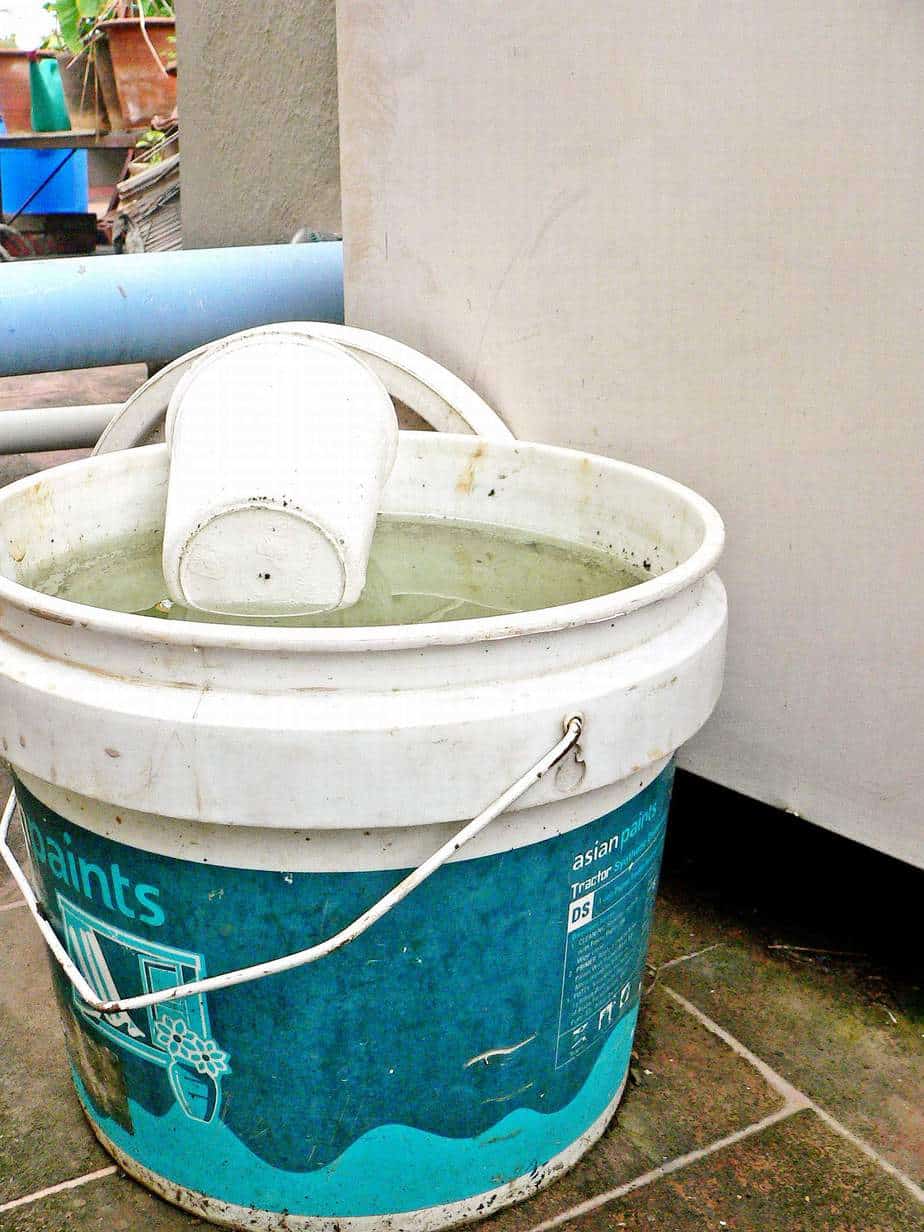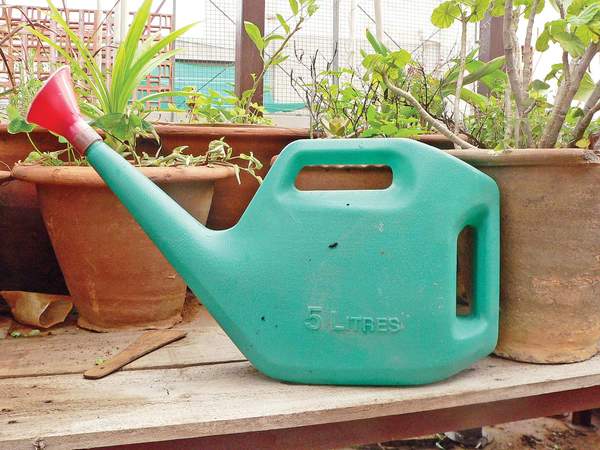A few days ago, I jumped at the opportunity of ‘converting’ yet another fellow urbanite. My cousin wanted some help in planting pudina (mint) in his balcony and we soon got talking about various aspects of plant care.
Watering can.
Pic:Vinita
It was then I realised that while watering appears to be a simple activity, it is in fact one of the most misinterpreted, often with disastrous consequences for the plant. When understood and carried out properly, it is capable of significantly influencing the relationship with the garden.
So, let’s start at the very beginning.
We don’t water plants, we actually water the soil.
Yes, you read right – we water the soil. The plants take in their required amount of water from the soil so watering the soil around the root zone (away from the stem) is most beneficial to the soil micro-organisms and therefore the plant.
Equally critical is knowing that plants need soil that is moist not wet. Moist soil enables the water to break down necessary components in the soil into a small enough size to be absorbed through the plant’s root system. Over-watering, on the other hand, results in the loss of nutrients and minerals from the soil.
When to water
Water early in the morning, not late in the evening.
Plant diseases are known to spread in wet, dark conditions and when we water in the late evening, water tends to stay on the leaves, making the plant more susceptible to catch mildew (a fungal disease). In daytime, if water does get on the leaves, it has a chance to dry out in the sunlight. Also, plants need water mainly during daylight hours so watering early morning would ensure that they are able to carry out their activity.
Plants are mainly made up of water and they need water for photosynthesis and to keep the turgor pressure in plant cells. If the plant is exposed to sun and wind, it loses turgor pressure as water transpires from its surface. When this happens, plants wilt.
How much?
The simplest test of whether the soil needs more water: If you poke your finger about an inch into the soil, it should come out cool and damp, not wet. If it is dry and powdery/crumbly, it is time to water!
For container gardens, one needs to exercise a little more caution as plants are completely dependent on our watering. So water needs to be planned and regular. Erratic watering stresses the plants. Allowing the soil to dry out completely between watering is not a good idea and works only for specific plants. Most plants require consistently moist soil conditions.

Watering with a bucket and mug.
Pic: Vinita
Ways of watering
For an urban home garden, there are several ways to water from the simple bucket and mug or rose can (can with a shower-head nozzle) to the more planned drip irrigation mechanism.
I personally prefer the rose can/bucket and mug method as it gives me more time in the garden! However there are several resources that can fix the drip irrigation system in your garden professionally.
Another method that I plan to try soon is the matka system or pitcher irrigation system. In its simplest form, pitcher irrigation entails burying an unglazed, porous clay pot next to a seedling. Water poured into pot seeps slowly into the soil, feeding the seedling’s roots with a steady supply of moisture.
Find a method that is best suited for you and one that does not waste water. As far as possible, try to harvest rainwater. Reuse gray water – i.e. water used for washing clothes or vessels for use in the garden. But remember this is only if can avoid synthetic detergents and use natural alternatives like soapnut or other powders.
Some pointers
- Mulching the soil adequately will increase its water retention capacity and reduce the frequency of watering needed.
- Companion planting will ensure that plants with different root system and water needs do well together
- Planning the garden with attention to windbreaks, plants with heavy foliage and adequate ground cover plants will also reduce the need for watering.
- Cover empty pots (that have soil but no plants) with mulch and water, so it retains moisture for microbial activity and health of the soil. It also helps to ensure soil is ready when you want to plant/sow.
- Finally paying attention to the health of the soil is the most important aspect of a plant’s health. Ensuring a well-proportioned mix of sand, red earth, compost and soil-building material (like cocopeat) is essential to make the soil loose, porous and to increase its water retention capacity.
In some cases, the canopy formed by the plant’s foliage may prevent water from reaching the soil. So check all plants rather than assume that a rain shower has provided adequate water for all the plants.
The needs of each plant are different. So keep a close eye on the soil and plants in your garden as they are your best guide for when and how much to water.
Further reference
⊕

Hi Vinita
Very informative. I have recently started a blog on container and ornamental gardening (http://vnasrikanth.wordpress.com/) – and with your permission, I would like to reference this article there – as a link. Will do that after a confirmation from you.
Thanks
Veena
Hi veena you are welcome to give a link to this page
thanks for asking
rgds